Ginger for colds: healing powers, recipes and dosage in focus!
Discover the healing powers of ginger for colds: from active ingredients and recipes to dosage instructions and research results.

Ginger for colds: healing powers, recipes and dosage in focus!
When the cold season arrives, colds are often an unavoidable companion. Coughing, a runny nose and a scratchy throat can have a significant impact on everyday life. But before you resort to chemical medications, it's worth taking a look at nature's treasure trove. Ginger, an inconspicuous root with a millennia-old history in medicine, proves to be a powerful ally in the fight against cold symptoms. This aromatic tuber, found in many cuisines around the world, not only offers culinary appeal, but also impressive health benefits. From Asian traditions to modern natural medicine, ginger has established itself as a tried and tested home remedy. In this article, we delve into the world of this versatile root and explain how it can accompany us through the cold season - naturally, effectively and with a touch of spice.
Introduction to the healing powers of ginger
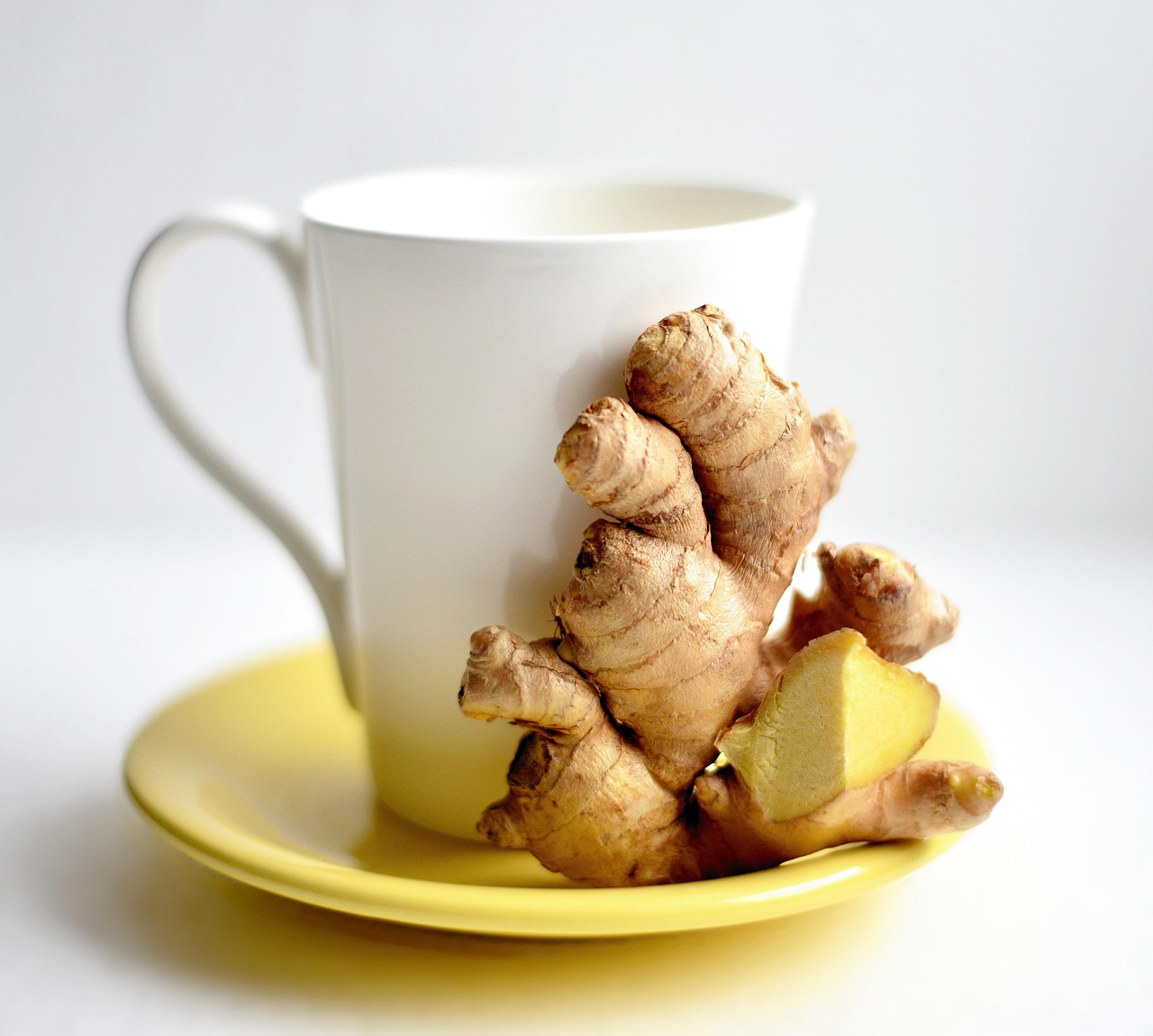
Imagine holding a gnarled, golden-brown root in your hand, whose pungent scent awakens the senses as soon as you peel it. This inconspicuous tuber, known as ginger, has carried nature's wisdom for thousands of years. Zingiber officinale was already praised as a remedy in ancient Asian writings, and its reputation as a versatile miracle cure has endured to this day. Ginger is particularly valued in natural medicine - not only because of its spicy aroma, but above all because of its impressive effect on the body and mind.
A key benefit of this root is its ability to support the immune system. The essential oils it contains, such as zingiberene, and pungent substances, including gingerol and shogaol, have antimicrobial and anti-inflammatory effects. They are particularly effective when it comes to colds by relieving chills and warming the body from the inside. In addition, they promote blood circulation, which acts as a natural source of energy in times of exhaustion or flu-like infections. Anyone who turns to ginger at the first sign of a scratchy throat often benefits from a noticeable improvement in their general condition.
Historically, the use of this medicinal plant goes back a long way. The Chinese philosopher Confucius is said to have used ginger while traveling to combat nausea. In fact, the ingredients in the root bind to receptors in the gastrointestinal tract and can thus effectively reduce nausea and discomfort. This property makes ginger a proven companion not only for colds, but also for travel sickness or pregnancy problems. A small dose - for example one or two slices of fresh ginger to chew - can work wonders, as numerous reports and studies suggest.
In addition to its effect on the stomach, ginger also impresses with its pain-relieving and anti-inflammatory properties, which are reminiscent of those of willow bark or aspirin. The root shows its potential particularly for chronic complaints such as rheumatism or osteoarthritis, as well as for joint and muscle pain. The gingerols, characteristic pungent substances of ginger, also inhibit the aggregation of platelets, which can reduce the risk of blood vessel blockages and arteriosclerosis. Ginger also benefits digestion: it stimulates the appetite, promotes the production of digestive juices and makes fat digestion easier by increasing the production of bile juice.
In traditional medicine, ginger is used in a variety of forms - fresh, dried, as a tea, shot or even externally in compresses. Fresh tubers score points with a high content of essential oils, while dried ginger impresses with a more intense proportion of pungent substances. This flexibility makes it an indispensable part of many home medicine cabinets. If you pay attention to quality, you should choose organic ginger, as the peel can also be used without hesitation. Further information on the versatile effects and uses can be found at My beautiful garden, where the medicinal plant is presented in detail.
Aside from colds and indigestion, there is evidence that ginger may lower blood sugar levels and improve insulin sensitivity, although the exact mechanisms still need to be researched. Naturopathy also emphasizes antioxidant effects that could protect cells from free radicals. The root is even mentioned again and again for menstrual problems or as a support during chemotherapy, although caution is advised when it comes to dosage. For most people, ginger is well tolerated in normal amounts, but you should proceed with caution if you have a sensitive stomach or are taking blood thinners.
The range of possible applications shows how deeply the root is rooted in the art of healing. Whether as a warming tea on cold days or as a spicy shot for a quick effect - ginger adapts to your needs. A look at the recommendations from NDR Health illustrates how versatile the medicinal plant can be used, especially for colds and other ailments. The tuber remains a fascinating example of how nature and health can go hand in hand.
Active ingredients in ginger
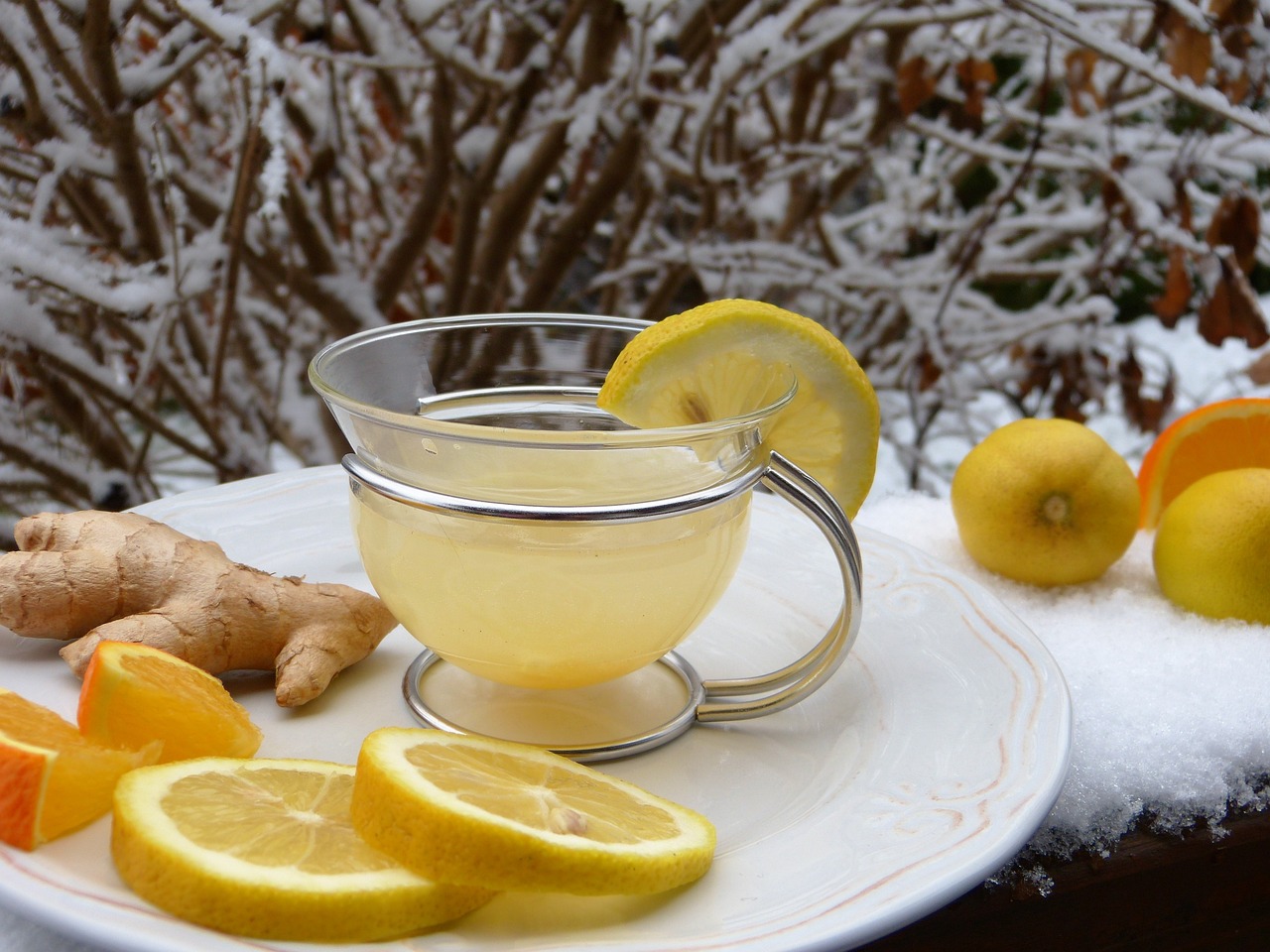
A sharp breath that tickles the tongue and a warming feeling that spreads throughout the body - behind these sensations lies the impressive chemistry of a special root. Ginger owes its healing power to a variety of bioactive compounds, especially gingerol and shogaol, which not only shape the taste but also have profound effects on our health. These natural substances are key to understanding why this tuber has been valued as a remedy for centuries, especially when it comes to strengthening the immune system and fighting colds.
Let's start with gingerol, the most prominent active ingredient in fresh ginger. Chemically, it is a phenolic compound found in high concentrations in the Zingiberaceae family. With the molecular formula C17H26O4 and a melting point of around 30 to 32 degrees Celsius, gingerol appears as a yellowish oil or crystalline solid. Its spiciness is unmistakable, but the health effects are far more important: Gingerol has a strong anti-inflammatory and antioxidant effect. These properties play a crucial role in supporting the immune system as they help dampen inflammatory processes in the body that often occur with colds or flu infections. In addition, gingerol shows antimicrobial effects that are effective against certain bacteria and fungi, which further supports the immune system.
Things get interesting when you look at the transformation of this connection. When cooked, gingerol converts into zingerone, a less pungent substance, while drying or mild heating produces shogaol, a substance that is even more intense in its pungency. Shogaol, which is mainly found in dried ginger, increases the anti-inflammatory effect and also helps to strengthen the immune system. Both substances intervene in cellular processes by reducing oxidative stress and promoting the production of glutathione, an important regulator of cell toxins. In this way, they protect the cells from damage caused by free radicals, which can occur more frequently during infections.
The effect on the immune system goes even further. Gingerol and shogaol influence pro-inflammatory signaling pathways by inhibiting certain proteins that are activated during an excessive immune response. This is particularly beneficial for colds, as excessive inflammation often leads to unpleasant symptoms such as a sore throat or swollen mucous membranes. By dampening such reactions, these bioactive compounds can help mitigate the progression of the disease. They also promote blood circulation, which supports the transport of immune cells in the body and accelerates regeneration.
A look at the research shows that gingerol also has potential beyond the immune system. Studies suggest that it can trigger apoptotic processes in cancer cells by disrupting cellular signaling pathways and inhibiting the growth of certain tumor cells. While these effects have not yet been sufficiently clinically confirmed, they highlight the versatility of the compound. For detailed information about gingerol and its mechanisms, it is worth taking a look at the comprehensive overview Wikipedia, which summarizes numerous studies and references.
Aside from their anti-inflammatory effects, gingerol and shogaol also help fight pathogens. Their antimicrobial properties are effective against bacteria such as Staphylococcus aureus or Escherichia coli as well as fungi such as Candida albicans. This makes ginger a valuable helper when the immune system is weakened by colds and becomes more susceptible to secondary infections. Additional information on the antimicrobial and immune-boosting effects can be found at Healthline, where the health benefits of ginger are clearly presented.
It remains exciting that the effect of these substances varies depending on the method of preparation. Fresh ginger contains more gingerol, making it ideal for direct immune system support, while dried ginger, which is higher in shogaol, can be beneficial for chronic inflammation or for long-term immune support. These differences illustrate how important it is to choose the right form for the purpose, especially when it comes to specifically relieving cold symptoms.
Ginger as a home remedy for colds
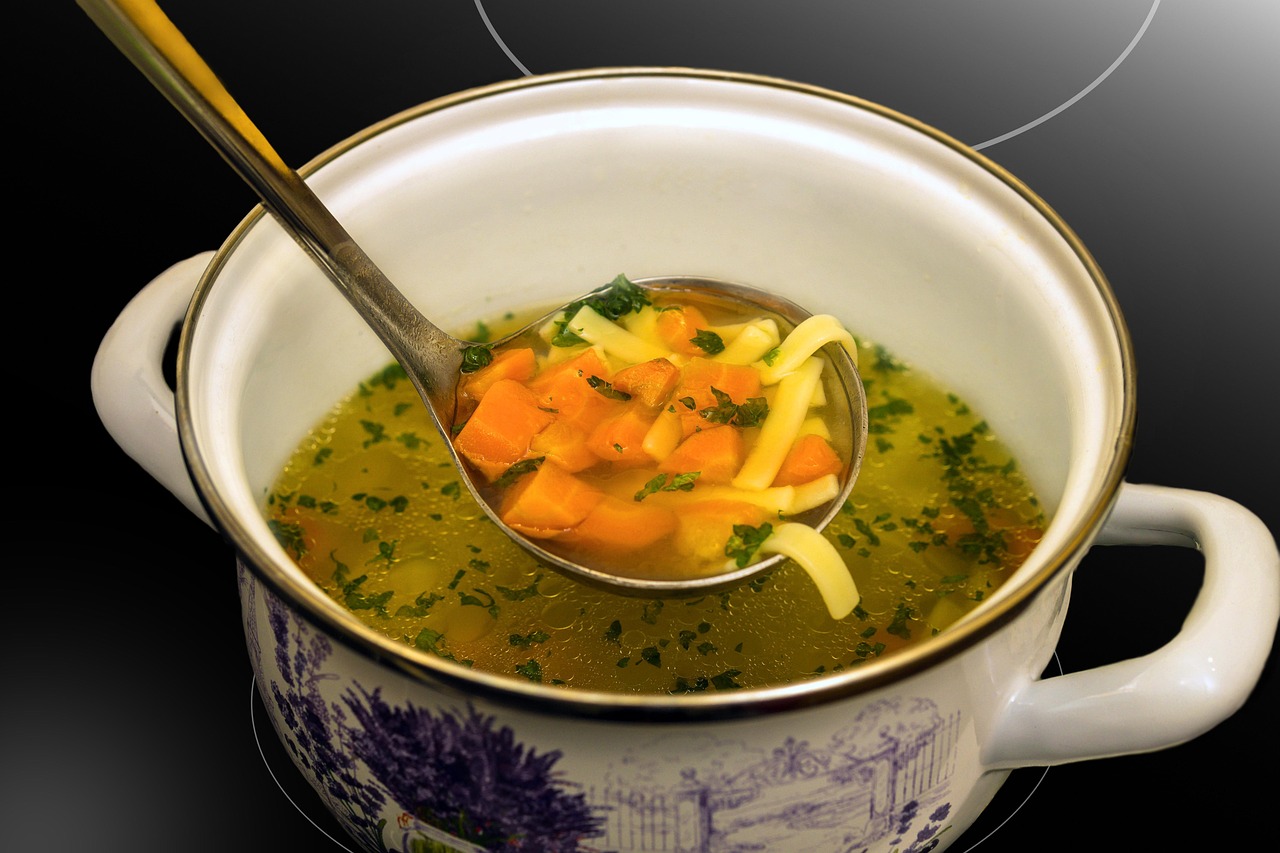
Hardly anything is as comforting as the smell of a steaming cup when your nose is stuffy and your body is craving warmth. Ginger offers just this kind of natural care when colds strike. With its anti-inflammatory and antimicrobial properties, the spicy root can be integrated into everyday life in a variety of ways to relieve coughs, sore throats or chills. From simple infusions to aromatic teas, the practical use of this medicinal plant is uncomplicated and accessible to everyone.
One of the most popular ways to harness the power of ginger for colds is to prepare ginger water. This simple home remedy warms you from the inside, strengthens your immune system and can be used as a preventive measure or at the first signs of a cold. To do this, peel a piece of fresh ginger about two centimeters in size, cut it into thin slices or grate it finely. The ginger is then poured with hot water and left to steep for at least five minutes. For a more intense flavor, you can also simmer the mixture for ten to twenty minutes. It is practical to prepare it in a thermos flask so that you can enjoy the drink warm throughout the day. This recipe and further tips for use can also be found at MDR Garden, where the diverse possible uses are described in detail.
If you like something a little more varied, you can make an aromatic tea from the ginger water. In contrast to pure infusion, additional ingredients such as black or green tea are added to refine the taste. A tried-and-tested recipe for a classic ginger tea starts with a small piece of ginger - about the size of a thumb - that is peeled and cut into thin slices. These slices go into a cup with a teaspoon of honey and the juice of half a lemon. When poured with boiling water, the tea should steep for about eight to ten minutes before pouring it through a sieve. The honey soothes the throat, while the lemon provides a boost of vitamin C, which further supports the immune system. Cloves or a touch of cinnamon can also be added for a spicy note.
Another variant is ginger tea with fresh mint, which is particularly beneficial for stuffy noses. To do this, take a piece of ginger about two centimeters in size, cut it into slices and boil it together with a handful of fresh mint leaves in half a liter of water for about ten minutes. After straining, you can sweeten with honey if you like. The mint provides a refreshing note and helps to open the airways, while the ginger has a warming and anti-inflammatory effect. Such recipes are not only effective, but also a welcome change from traditional cold drinks.
In addition to drinks, ginger can also be used externally to relieve symptoms. For example, a ginger wrap can be helpful for joint pain or tension that often accompanies colds. To do this, finely chop a small piece of ginger, heat it with a cup of vinegar and let the mixture steep for ten minutes. A cotton cloth is soaked in the liquid, wrapped around the affected area and covered with a dry cloth. After about two hours of exposure, you should remove the wrap. It is important not to use this method on acutely inflamed or warm areas to avoid irritation.
For a quick effect, you can also use ginger juice, which provides concentrated bioactive ingredients. Particularly high-quality organic ginger juice, free of artificial additives, is suitable for this. A small sip - pure or diluted with water - can provide immediate relief if you start to have a scratchy throat or general discomfort. Further application ideas and background information on the quality of such products are offered Gingerians, where traditional home remedies are re-examined.
There are a few cautions to keep in mind with all of these uses. People with sensitive stomachs, high blood pressure or gallstones should only consume ginger in moderation. Pregnant women are advised to consult a doctor or midwife before use, as the root could in rare cases trigger labor. But for most, ginger offers a safe and natural way to combat cold symptoms without resorting to chemical agents.
Studies and research results
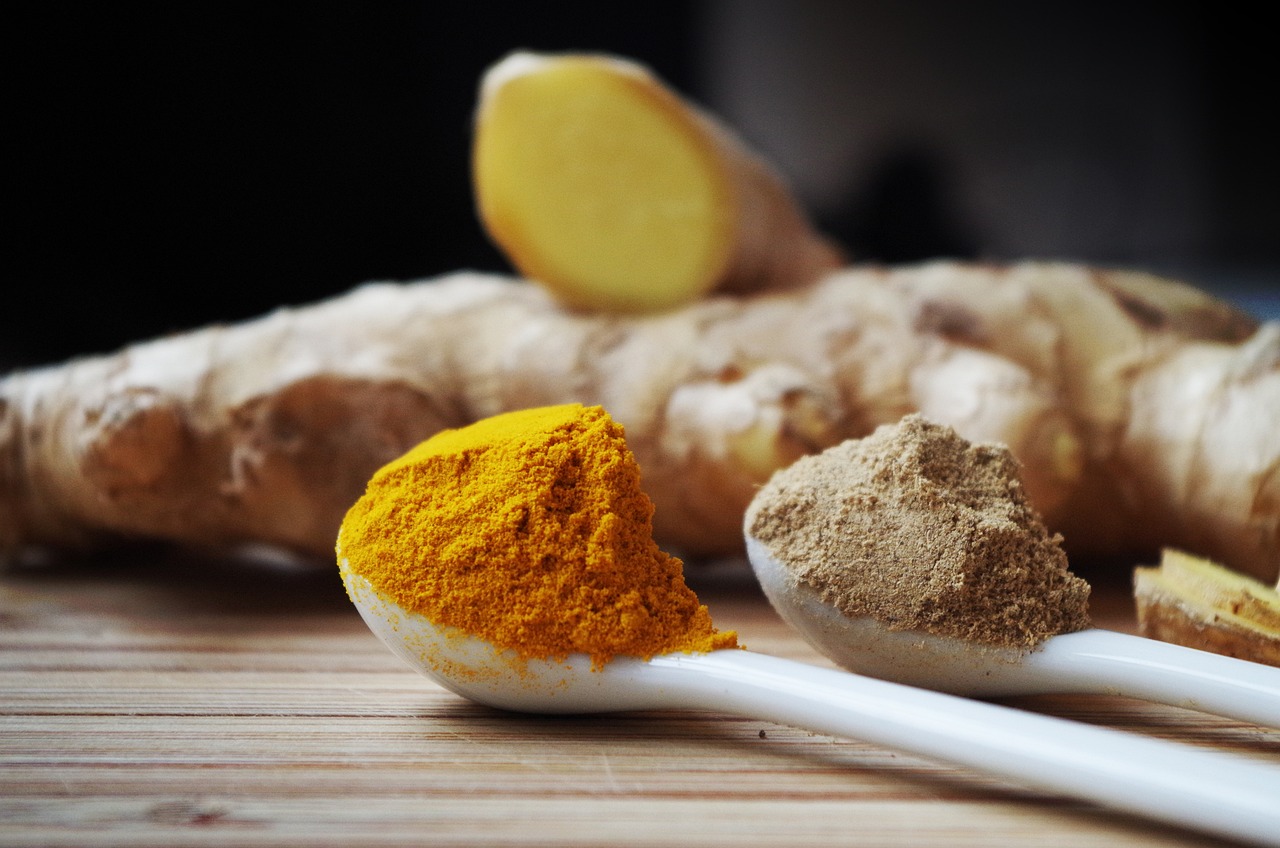
Behind the spicy note and the warming effect lies a question that concerns scientists around the world: Can a simple root like ginger actually have measurable effects against colds and respiratory diseases? Modern research has taken on this ancient medicinal plant to support its traditional uses with empirical data. The bioactive ingredients, particularly gingerol and shogaol, are examined to understand their role in relieving symptoms such as cough, sore throat or congested airways.
One focus of the studies is on the anti-inflammatory properties of ginger. Inflammation plays a central role in colds, as it is responsible for symptoms such as swollen mucous membranes or a sore throat. Research suggests that gingerol may inhibit pro-inflammatory signaling pathways in the body by reducing the activity of certain proteins. This could explain why many people experience noticeable relief from respiratory problems after consuming ginger tea. Although large-scale clinical studies are still rare, smaller studies show promising evidence of an anti-inflammatory effect that could have a positive impact on the course of the disease.
Another aspect that is scientifically examined is the antimicrobial power of ginger. Laboratory studies have shown that the root's essential oils and pungent substances can act against certain bacteria and viruses that often cause secondary infections in colds. This property could help reduce the burden on the immune system by reducing the risk of complications such as bacterial sinusitis or bronchitis. However, the transferability of such laboratory results to the human organism remains a challenge, as the concentrations of the active ingredients in vivo are often lower than under controlled conditions.
Studies that look at the immune-modulating effects of ginger are also interesting. Some work suggests that the bioactive compounds promote the production of antioxidants such as glutathione, which protects cells from oxidative stress - a factor that is increased in respiratory infections. In addition, ginger could stimulate blood circulation, which facilitates the transport of immune cells to affected areas. These mechanisms are particularly relevant when the immune system is weakened by cold viruses and needs support in regeneration.
A look at the traditional use of ginger for colds shows that many cultures have relied on the root to relieve symptoms for centuries. While such experiences are not always scientifically based, they provide a basis for modern research. A comprehensive overview of the historical and current findings on ginger can be found at Wikipedia, where the traditional use in medicine and initial scientific approaches are summarized. This source makes it clear that although ginger is firmly anchored in folk medicine, not all of its effects have been confirmed by large-scale studies.
Despite the promising approaches, there are also limitations in the research. Many studies on ginger and respiratory disease are based on small samples or in vitro experiments, making it difficult to generalize the results. In addition, the quality and dosage of the ginger preparations used varies greatly, making comparisons between studies difficult. Some work suggests that its effects on colds may be more supportive than curative, meaning ginger is best used in combination with other measures such as rest and adequate hydration.
Another point that is receiving attention in research is individual tolerance. While ginger is well tolerated in most people, high doses can cause side effects such as stomach irritation in sensitive individuals. Studies therefore emphasize the need to choose the dosage carefully, especially when treating cold symptoms. Additional information on the applications and previous scientific findings is also provided Wikipedia in German, where the antibacterial and antiviral properties of ginger are also discussed.
The scientific study of ginger is a dynamic field that is constantly growing. In the coming years, new studies could provide further clarity about the exact mechanisms of action and the optimal use for colds and respiratory diseases. Until then, the combination of traditional knowledge and initial empirical evidence remains a promising approach for anyone seeking natural remedies to relieve symptoms.
Preparation of ginger preparations

With a small tuber in your hand and a touch of curiosity, the kitchen can quickly be transformed into a small medicine cabinet. Ginger offers countless possibilities for making your own natural remedies for colds, be it as a soothing tea, an invigorating shot or other simple preparations. These methods are not only effective, but also easy to implement, so everyone – whether a beginner or an experienced herbalist – can benefit from the benefits of this spicy root.
Let's start with a classic: ginger tea, a tried and tested companion during the cold season. For one cup you need a walnut-sized piece of fresh ginger, ideally organic, so that you can use the peel without hesitation. This is washed and cut into thin slices or finely grated - the smaller the pieces, the more ingredients such as gingerol and essential oils are released. The slices are placed in a cup, poured over with boiling water and steeped for about six to ten minutes. If you like it spicier, let the tea steep longer. You can sweeten with honey to taste as soon as the drink has cooled to around 40 degrees to protect the valuable enzymes in the honey. A squeeze of lemon juice or two slices of organic lemon complement the recipe with a boost of vitamin C. Further details and variations on preparation can be found at Bavaria 1, where the beneficial effects of ginger tea are described in detail.
Another aromatic variant is ginger tea with mint, which particularly relieves congested airways. To do this, cut a piece of organic ginger about a centimeter in size into thin slices after washing it thoroughly. Place the slices in a cup with one or two sprigs of fresh mint. Pour 250 ml of boiling water over it and let the mixture steep for five to ten minutes before removing the solid components. Optionally, the tea can be refined with honey, and if the taste is too intense, a splash of lemon juice can be added. This preparation not only strengthens the immune system, but also has a refreshing and expectorant effect. A similar guide with additional tips is provided Bridget, where the health benefits of ginger are also highlighted.
For anyone who prefers a quick and concentrated dose of ginger, ginger shots are ideal. These little power packs deliver the active ingredients in concentrated form and are perfect for reacting to the first signs of a cold. For one shot you need around 50 grams of fresh ginger, which is peeled and cut into small pieces. These go into a blender or juicer along with the juice of one lemon and a teaspoon of honey. Alternatively, you can grate the ginger finely and press the juice through a fine sieve or cloth. The result is an intense shot that can be drunk neat or diluted with a little water. If you like it milder, add a dash of apple juice. The shot will keep in an airtight container in the refrigerator for about a week. This method is particularly practical for on the go or on stressful days when there is no time for elaborate preparations.
In addition to teas and shots, ginger can also be used in other natural remedies, such as a warming ginger bath. This is ideal for getting rid of chills and stimulating blood circulation. To do this, grate about 30 to 50 grams of fresh ginger and place it in a cotton bag or a fine sieve. This is hung in a hot bath so that the active ingredients are transferred into the water. A 15 to 20 minute bath can do wonders to relax the body and support the immune system. It is important to stay warmly wrapped up afterwards to keep the heat and avoid getting cold again.
Another simple use is to make ginger honey, which has a soothing effect on sore throats. To do this, cut a piece of ginger about two centimeters in size into thin slices and place them in a small jar with about 100 grams of honey. After a few days in the fridge, the ingredients of the ginger are absorbed into the honey and you can take a teaspoon straight or dissolve it in warm water every day. This mixture combines the anti-inflammatory properties of ginger with the soothing effects of honey and is particularly pleasant for scratchy throats.
The variety of preparation options shows how flexible ginger is in use. Whether as a warming drink, a concentrated shot or a supportive bath – the root adapts to individual needs. You should always pay attention to your own tolerance and dose carefully if you are unsure, for example during pregnancy or if you have existing health problems.
Combination with other medicinal plants
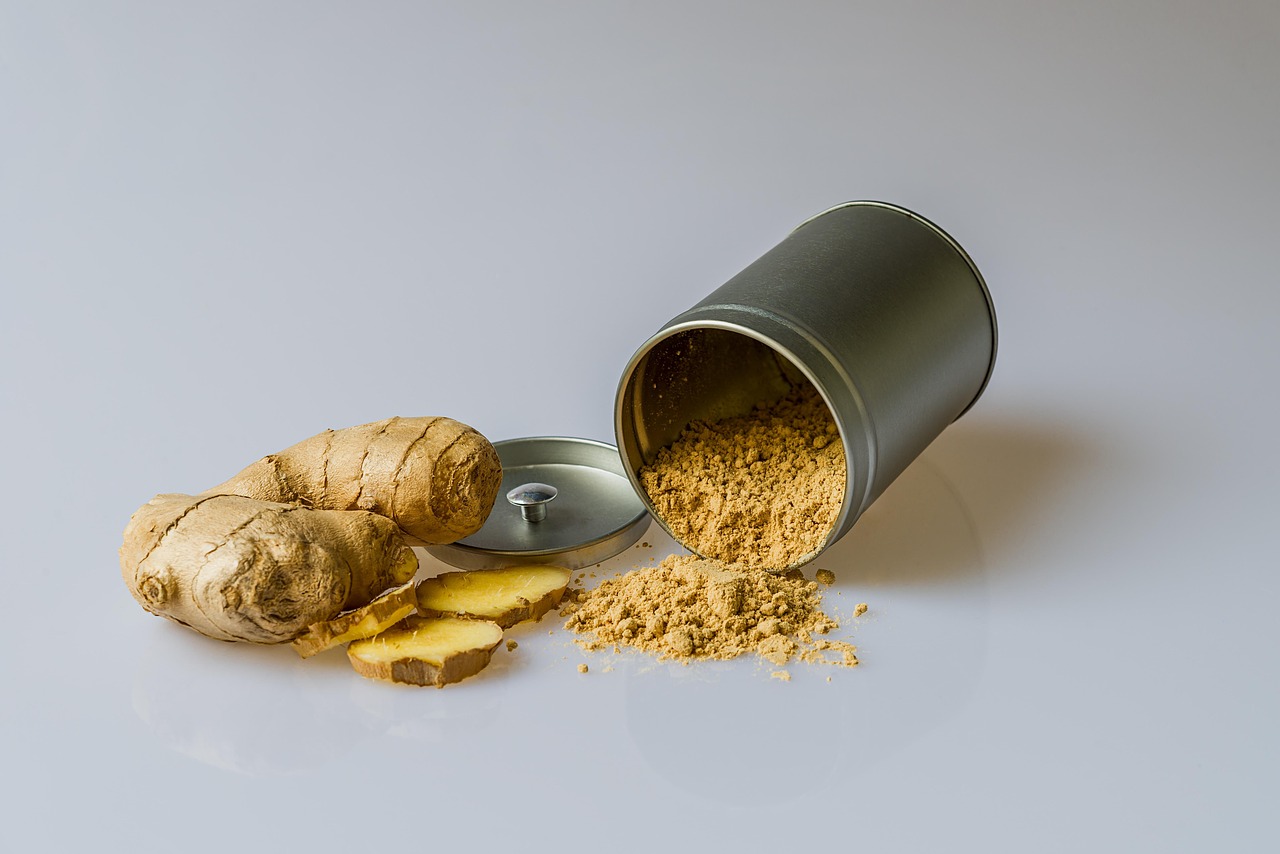
Imagine a steaming cup whose scent is infused not only with spicy ginger, but also with a hint of cinnamon and a touch of herbal aroma - a real relief when you have a cold. The power of ginger can be further enhanced by cleverly combining it with other herbs and spices, creating a synergistic interaction that supports the immune system and effectively relieves symptoms such as coughs or sore throats. These natural allies complement ginger's anti-inflammatory and antimicrobial properties, providing holistic support during the cold season.
A proven partner for ginger is turmeric, another member of the Zingiberaceae family known for its intense yellow color and healing properties. Turmeric contains curcumin, an active ingredient with powerful anti-inflammatory and antioxidant effects that can enhance the effects of ginger on colds. A simple way to combine the two is to make a warming tea: a piece of fresh ginger (about two centimeters) and a teaspoon of turmeric powder or a small piece of fresh turmeric root are boiled in 500 ml of water for about ten minutes. After straining, you can sweeten with honey and add a squeeze of lemon to promote curcumin absorption. This mixture reduces inflammation in the respiratory tract and supports the immune system twice as much.
Another valuable supplement is cinnamon, whose sweet and spicy taste not only pleases the palate, but also has health benefits. Cinnamon has a slightly antimicrobial effect and can stimulate blood circulation, which, in combination with the warming effect of ginger, is particularly helpful for chills. To make ginger-cinnamon tea, take a small piece of ginger, cut it into slices and boil it with a cinnamon stick in half a liter of water for about eight minutes. After steeping, you can refine it with honey as desired. This combination creates a pleasant warmth in the body and can relieve coughing.
Mint brings a refreshing note to the mix and is an ideal complement to ginger, especially if you have a stuffy nose or respiratory problems. The essential oils of mint, especially menthol, have an expectorant effect and make breathing easier, while ginger reduces inflammation. To make tea, cut a centimeter piece of ginger into thin slices and place it in a cup with a handful of fresh mint leaves. Pour boiling water over it and let the mixture steep for five to ten minutes. This combination opens the airways and provides an invigorating feeling that can provide immediate relief from colds.
Thyme is another herb that combines excellently with ginger, especially for coughs and bronchial problems. Thyme contains thymol, an essential oil with powerful antimicrobial and antispasmodic properties that can relieve the urge to cough. To make a healing infusion, boil a piece of ginger (about two centimeters) along with a teaspoon of dried thyme or a few fresh sprigs in 500 ml of water for about ten minutes. After straining, you can sweeten with honey to further soothe your throat. This mixture supports the respiratory system and enhances the antimicrobial effects of ginger.
An often underrated supplement is cardamom, a spice from the same plant family as ginger that has been valued in traditional medicine for centuries. Cardamom has a mild expectorant effect and can relieve digestive problems that sometimes accompany colds. To make an aromatic tea, crush two to three cardamom pods to reveal the seeds and boil them with a piece of ginger in half a liter of water for about eight minutes. This combination not only enriches the taste, but also supports the body's regeneration. Further information on the historical use of ginger and related spices such as cardamom can be found at Wikipedia, where the cultural and medical significance is presented in detail.
Honey also deserves mention, even if it is not an herb or spice in the classic sense. Its calming properties make it a perfect companion for ginger for sore throats and coughs. Honey has a mild antibacterial effect and coats irritated mucous membranes, while ginger fights inflammation. In almost all teas or infusions, after cooling to about 40 degrees, you can add a teaspoon of honey to preserve the healing enzymes. Provides additional information on the health benefits of ginger and possible combinations Healthline, where the anti-inflammatory effects and other possible uses are described.
Combining ginger with these herbs and spices opens up a variety of options for addressing individual cold needs. Whether you want to boost the warming effects with cinnamon, clear the respiratory tract with mint or thyme, or increase the anti-inflammatory power with turmeric, nature offers numerous options for getting the most out of this versatile root.
Dosage and instructions for use

When picking up the hot root that is available in the kitchen, you should not only think about the beneficial effect, but also about the right amount and method of use. Ginger may be a natural remedy, but as with all powerful substances, dosage plays a critical role in maximizing benefits and minimizing risks. Particularly for certain groups of people, such as pregnant women or people with previous illnesses, it is important to proceed with caution so that use remains safe.
Most healthy adults have clear guidelines when it comes to consuming ginger. For fresh ginger, a daily amount of one to three grams is recommended, which is about a quarter to half a teaspoon, taken a maximum of three times a day. For a ginger tea, two to three grams of fresh ginger per cup are sufficient, which should be steeped for five to ten minutes - also no more than three times a day. Anyone who uses ginger preparations such as capsules or powder should follow the manufacturer's specific dosage recommendations, as the concentration of the active ingredients can vary. These amounts are generally well tolerated and help with colds thanks to their anti-inflammatory and immune-boosting properties.
However, dosage depends on individual factors such as age, weight and general health. Children and older people often react more sensitively to pungent substances such as gingerol and shogaol, which is why lower amounts are advisable - for children, for example, only one gram of fresh ginger per day. A higher dose can also make sense for acute symptoms in the short term, while a lower, regular intake is preferred for chronic conditions. If you are unsure, you should start with small amounts and monitor your body's reaction to avoid overdoses.
Particular caution is required for pregnant women. While ginger is often used in small amounts to relieve pregnancy nausea, high doses carry the risk that it could induce labor. Studies suggest that a maximum of one gram of fresh ginger daily may be safe, but this should be discussed with a doctor or midwife. Medical advice is also recommended during breastfeeding, as the active ingredients could be passed on to the child through breast milk. For detailed tips on safe dosage, especially in sensitive phases of life Gingerians valuable information and expert advice.
People with certain pre-existing conditions also need to proceed with caution. In the case of gastrointestinal diseases such as heartburn or stomach ulcers, the pungent substances in ginger can increase irritation, which is why small amounts - around half a gram per day - or even avoiding it may be advisable. You should also be careful with gallstones, as ginger stimulates the production of bile and could therefore cause symptoms. People with diabetes or those taking blood-thinning medications need to be aware of possible interactions: Ginger can lower blood sugar levels and increase the risk of bleeding. In such cases, it is essential to consult your doctor before taking ginger regularly.
Although side effects are rare, they are possible, especially with excessive consumption. Stomach problems such as nausea, heartburn or vomiting can occur, as can allergic reactions that manifest themselves as itching, rash or difficulty breathing. Anyone who notices such symptoms should immediately reduce or stop taking the medication and seek medical advice. Interactions with other herbs, dietary supplements or medications are also possible, which is why a combination should always be done with caution and ideally after consulting an expert.
Another helpful resource that provides specific information on safe use and scientific background Ginger guide, where studies and recommendations on dosage and possible risks are summarized. This page also sheds light on the effects of ginger on various ailments and provides information on how to adjust the amount individually.
Proper handling of ginger requires a little attention, especially if you belong to a risk group. Used carefully, however, this root can provide valuable support for colds without putting unnecessary strain on the body. Conscious handling and, if necessary, professional advice are the key to safely using the healing properties.
Possible side effects and interactions

A spicy sip of ginger tea can be like a warm cloak on a cold day, but behind this beneficial effect there are also potential pitfalls that you should be aware of. While the tuber is celebrated for its healing properties for colds, potential side effects and drug interactions should not be underestimated. A conscious approach to using this natural remedy is essential in order to avoid unpleasant surprises and safely enjoy the benefits.
One of the most common areas where ginger affects the body is the gastrointestinal tract - and this is where problems can arise. The pungent substances such as gingerol and shogaol, which are responsible for the anti-inflammatory effect, can irritate the stomach lining in sensitive people. Symptoms such as stomach pain, flatulence, diarrhea or heartburn are possible consequences, especially if the recommended daily dose of one to two grams of fresh ginger is exceeded. Some people also report an unpleasant burning sensation in the mouth or throat caused by the intense spiciness. If you have a sensitive stomach or are sensitive to spicy substances, you should start with the smallest amounts and observe your body's reaction.
Another point that deserves attention is the possible effect on blood clotting. Ginger can influence the blood's ability to clot by inhibiting the aggregation of platelets. This poses a risk for people who are already taking blood-thinning medications such as aspirin or warfarin, as the effects of these medications could be increased. Consequences such as an increased risk of bleeding or more frequent nosebleeds are conceivable, even if studies do not provide clear evidence of this. However, experts advise caution, especially before operations or if you have existing blood clotting disorders. In such cases, it is essential to consult your doctor before consuming ginger regularly.
The tuber can also cause unwanted effects in people with gallstones. By stimulating bile production, ginger could cause pain or colic in existing stones. Those affected should therefore only use this home remedy after consulting a doctor and avoid highly concentrated preparations such as ginger shots. Caution is also advised for people with low blood pressure, as there is evidence that ginger could further lower blood pressure - although further studies are needed to make clear statements.
Pregnant and breastfeeding mothers form another risk group for which side effects require particular attention. While small amounts of ginger are often used to relieve nausea, larger doses can promote contractions or soften the cervix, increasing the risk of complications. Side effects such as headaches or heartburn have also been reported. During breastfeeding, there are uncertainties about how the active ingredients could be passed on to the child. It is therefore recommended to keep consumption to a minimum and always seek medical advice.
In addition to the direct side effects, interactions with other medications are an important issue. In addition to blood thinners, ginger could also influence the effect of blood sugar-lowering medications because it can lower blood sugar levels. This is relevant for diabetics who need to adjust their medication precisely to avoid hypoglycemia. One should also be vigilant when taking blood pressure medication, as the hypotensive effects of ginger could potentiate the medication effects. For well-founded information on these risks and further details, it is worth taking a look at Heilpraxisnet, where the potential side effects of ginger are examined in detail.
Another valuable source for detailed advice on risks and precautions Utopia, which particularly addresses the effects on risk groups such as pregnant women or people with gallstones. This site emphasizes that ginger should be consumed in moderation and that individual consultation with a healthcare professional is often the safest way to avoid adverse effects.
The range of possible side effects and interactions shows that ginger is not suitable for everyone in every situation. A careful approach, adapted to your own health condition and the medications you take, remains the best approach to reap the benefits of this tuber for colds without exposing yourself to unnecessary risks.
Nutritional integration of ginger
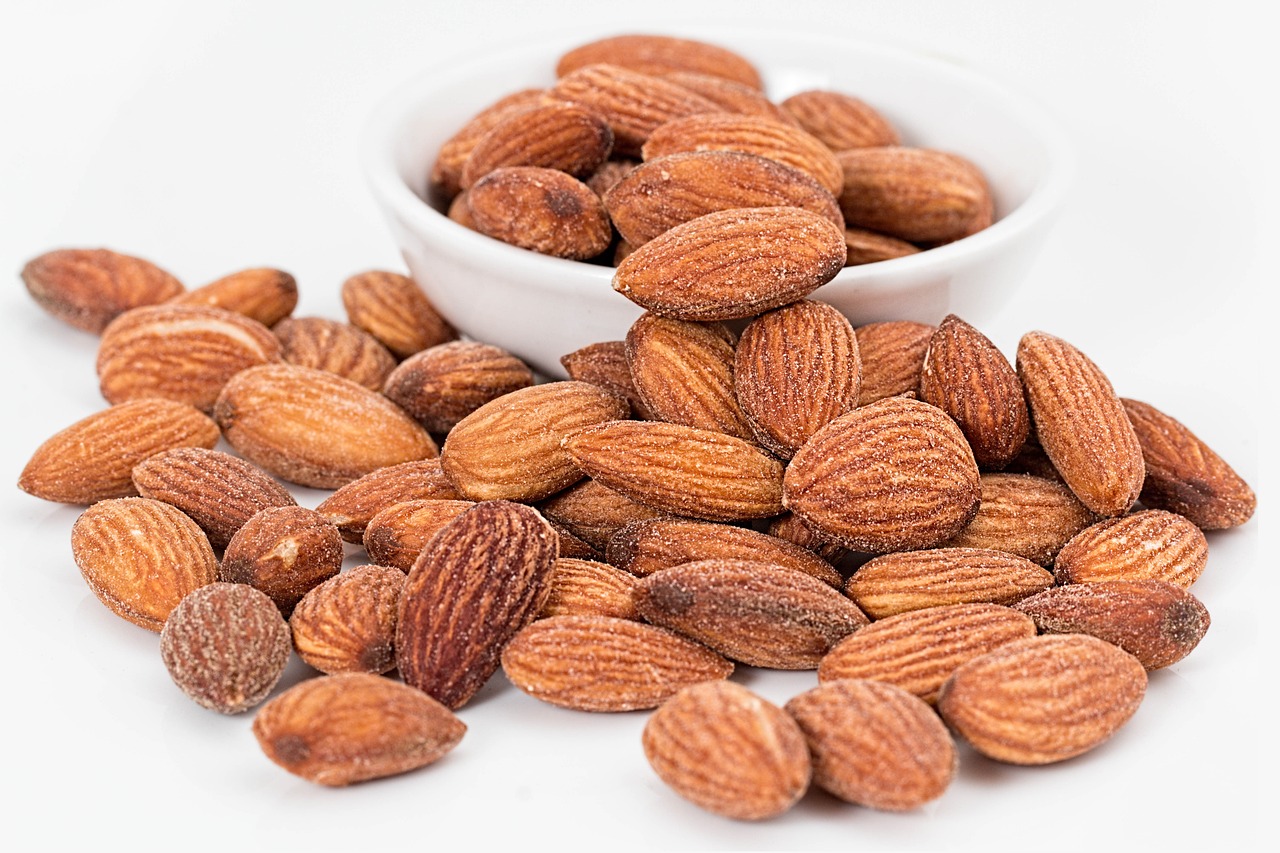
Why not start your morning with a hint of spiciness that not only awakens the taste buds but also strengthens the body? Ginger, with its unique taste and health-promoting properties, can be easily incorporated into your daily routine to support the immune system and promote overall health. This versatile root can be a valuable companion far beyond the cold season if you creatively integrate it into your daily diet.
One of the easiest ways to enjoy ginger regularly is by adding it to drinks. A morning smoothie becomes a real energy booster with a small piece of fresh ginger - about a centimeter, finely grated. Combined with apple, banana, spinach and a dash of orange juice, the tuber not only adds a spicy note, but also provides anti-inflammatory substances such as gingerol, which stimulate the metabolism. If you prefer it warm, you can start the day with ginger-lemon water: Pour hot water over a few thin slices of ginger, add a splash of lemon juice and sweeten with honey if desired. This drink supports digestion and strengthens the immune system before the day really begins.
In the kitchen, ginger opens up numerous possibilities to not only enhance the taste of dishes, but also to create added health benefits. When cooking soups or stews, such as pumpkin soup, a small piece of grated ginger provides a pleasant spiciness and at the same time promotes blood circulation - ideal for cold days. Ginger is also an indispensable ingredient in Asian-inspired dishes such as a vegetable curry or a Thai stir-fry. Simply finely chop or grate an inch or two of the root and sauté with garlic and onions to unlock the full flavor and health benefits. The essential oils, such as zingiberen, support digestion and have an antimicrobial effect.
For those with a sweet tooth, ginger is an exciting ingredient in sweet treats that still keep health in mind. Homemade ginger cookies or ginger-honey bread can be refined with dried ginger powder or finely grated fresh ginger. A pinch – about half a teaspoon – is enough to create the typical flavor without dominating, while also providing antioxidant properties that support the immune system. The tuber can also score points in desserts such as an apple-ginger crumble: mix a small piece of ginger, finely chopped, with the apples to create a warming, slightly spicy note that strengthens the body from within.
Another easy way to use ginger every day is to incorporate it into salads or dressings. A ginger and carrot salad, for example, becomes a healthy highlight with a dressing made from grated ginger, olive oil, lemon juice and a touch of honey. The pungent substances in the root promote blood circulation and can help prevent colds, while the taste offers a refreshing change. Ginger can also be used in marinades for meat or vegetables - a teaspoon of grated ginger combined with soy sauce and garlic not only adds flavor, but also supports the digestion of heavy meals.
For anyone who wants to enjoy ginger on the go, there are small snacks or shots that can be easily prepared. A ginger shot, made from 50 grams of fresh ginger, the juice of one lemon and a little honey, can be portioned into small bottles and stored in the refrigerator. A sip in the morning or in between provides a quick dose of immune-boosting substances. Alternatively, you can carry dried ginger in the form of candied pieces as a healthy snack - a small amount is enough to supply the body with the valuable ingredients. Further suggestions on the uses and health benefits of ginger can be found at AOK, where the versatile uses of the tuber are described in detail.
Offers an additional source for creative ideas and background knowledge on the effects of ginger NDR Health, which emphasizes how the root in various forms – fresh, dried or as a shot – can strengthen the immune system and stimulate metabolism. This page also provides advice on the optimal dosage to reap the benefits without risks.
Incorporating ginger into your daily diet requires little effort but brings with it a wealth of health benefits. Whether in savory dishes, sweet treats or refreshing drinks - the tuber adapts to almost every meal and supports the body in staying fit and resilient.
Conclusion and outlook
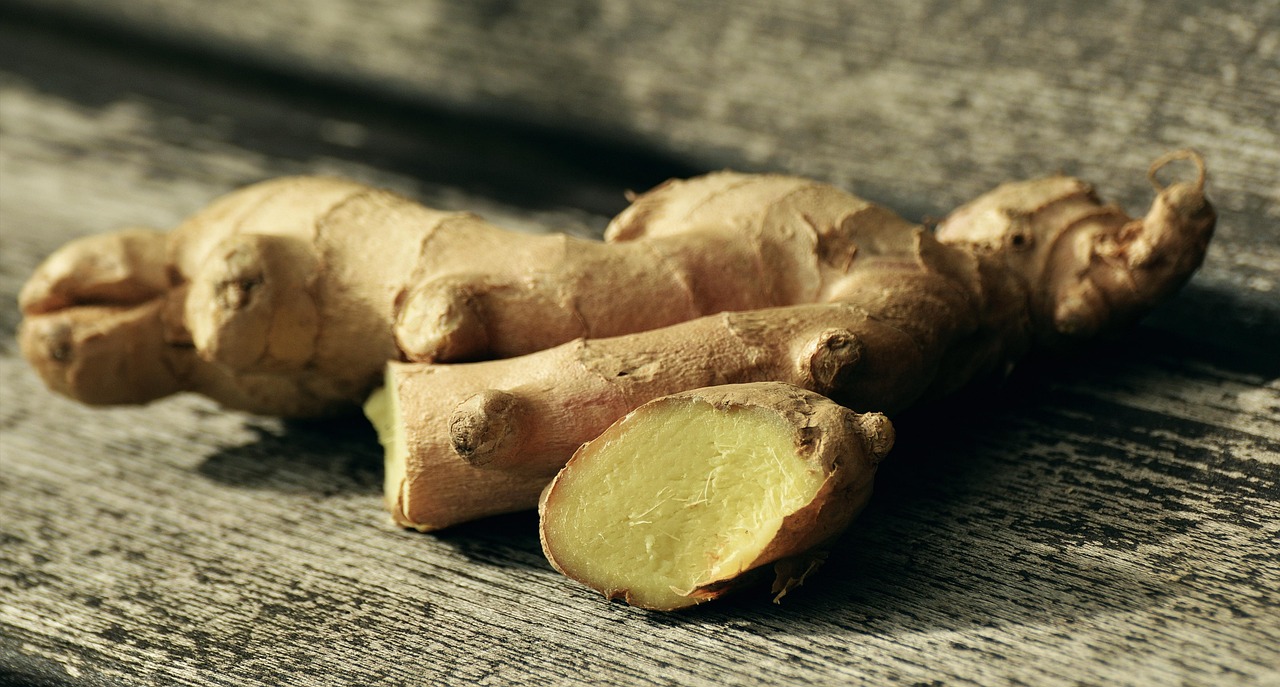
A small bite of this spicy root can do more than just tickle the taste buds - ginger has proven to be a powerful gift from nature, especially when it comes to fighting colds and promoting health. After a journey through its diverse uses, from traditional home remedies to modern preparations, it is worth summarizing the key findings and taking a look at the exciting possibilities that future research in naturopathy could open up.
The root, known as Zingiber officinale, brings with it an impressive array of bioactive compounds such as gingerol and shogaol, which have anti-inflammatory, antimicrobial and antioxidant properties. These substances make ginger a valuable helper for colds by relieving symptoms such as sore throats, coughs and chills and supporting the immune system. Whether as a warming tea, a concentrated shot or in combination with other medicinal plants such as turmeric and thyme - the possible uses are diverse and can be easily adapted to individual needs. In addition, integrating ginger into your daily diet, be it in smoothies, soups or even desserts, can help strengthen your immune system in the long term.
However, a conscious approach to dosage remains essential in order to benefit safely from the benefits. For most people, one to three grams of fresh ginger daily is considered acceptable, but risk groups such as pregnant women or people with previous illnesses should proceed with caution and seek medical advice. Possible side effects such as stomach irritation or interactions with medications, especially blood thinners, highlight the need to use ginger carefully. The right balance between benefit and risk is the key to effectively incorporating this natural remedy into everyday life.
Research to date provides promising evidence of ginger's effectiveness, particularly in relieving cold symptoms and supporting the immune system. Studies show that gingerol's anti-inflammatory properties may help dampen inflammatory processes in the respiratory tract, while antimicrobial effects may reduce the risk of secondary infections. However, many of these findings are limited to small studies or in vitro experiments, highlighting the need for larger, clinical studies. A comprehensive overview of the current state of research and the historical roots of ginger in medicine can be found at Wikipedia, where both traditional usage and scientific approaches are presented in detail.
A look into the future shows that ginger still has a lot of undiscovered potential. Future research could focus on further deciphering the exact mechanisms of action of gingerol and shogaol, particularly in relation to their immune-modulating effects. Large-scale clinical studies are necessary to clearly demonstrate its effectiveness for colds and other illnesses and to develop standardized dosage recommendations. The focus is also on studying drug interactions and the long-term effects of regular consumption to ensure safety for different population groups. Provides additional information on current findings and open questions in research Healthline, which emphasizes the need for further studies to confirm health benefits.
The area of personalized naturopathy, in which ginger could play a role, is also interesting. Future developments could aim to study individual responses to the root to enable tailored applications. New formulations such as standardized extracts or combination preparations with other medicinal plants could also be created in order to specifically optimize the effect. Ginger's journey in modern medicine is far from over, and the coming years promise exciting insights into the full potential of this ancient medicinal plant.
Sources
- https://www.mein-schoener-garten.de/lifestyle/gesund-leben/ingwer-heilpflanze-41146
- https://www.ndr.de/ratgeber/gesundheit/Ingwer-Welche-gesunde-Wirkung-hat-die-Heilpflanze-,ingwer238.html
- https://en.m.wikipedia.org/wiki/Gingerol
- https://www.healthline.com/nutrition/11-proven-benefits-of-ginger
- https://www.mdr.de/mdr-garten/ingwer-heilpflanze-hausmittel-ingwerwickel-ingwerwasser-100.html
- https://ingwerianer.de/blogs/ingwerianer/ingwer-als-hausmittel-traditionelle-anwendungen-neu-entdeckt
- https://en.wikipedia.org/wiki/Ginger
- https://de.wikipedia.org/wiki/Ingwer
- https://www.br.de/radio/bayern1/ingwer-tee-100.html
- https://www.brigitte.de/rezepte/kochtipps/ingwertee-zubereiten-so-einfach-gehts-11674174.html
- https://ingwerianer.de/blogs/ingwerianer/ingwer-richtig-dosieren-tipps-von-experten
- https://www.ingwer-ratgeber.com/ingwerpulver/
- https://www.heilpraxisnet.de/naturheilpraxis/gesunder-ingwer-welche-nebenwirkungen-hat-die-knolle-wirklich-20190403447964/
- https://utopia.de/ratgeber/ingwer-und-seine-nebenwirkungen-das-solltest-du-wissen_144525/
- https://www.aok.de/pk/magazin/ernaehrung/obstgemuese/diese-wirkung-hat-ingwer-auf-die-gesundheit/

 Suche
Suche
 Mein Konto
Mein Konto